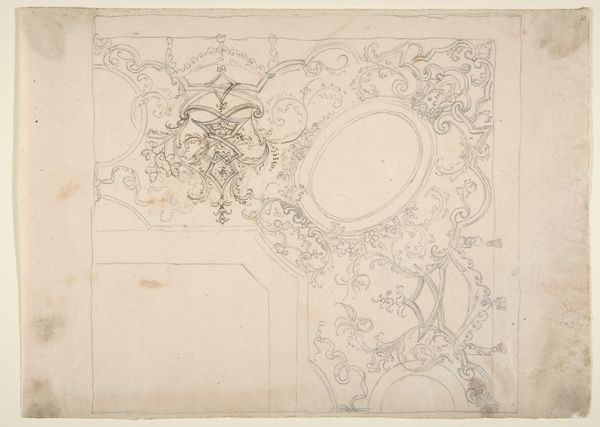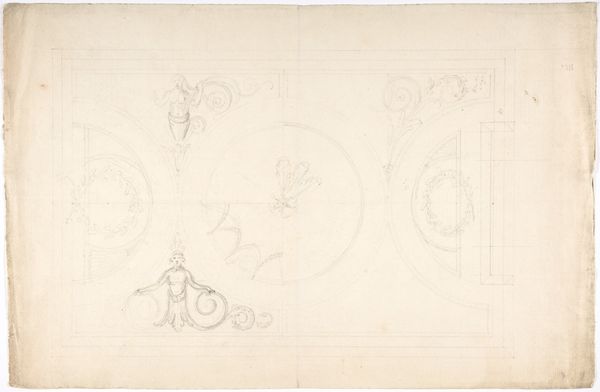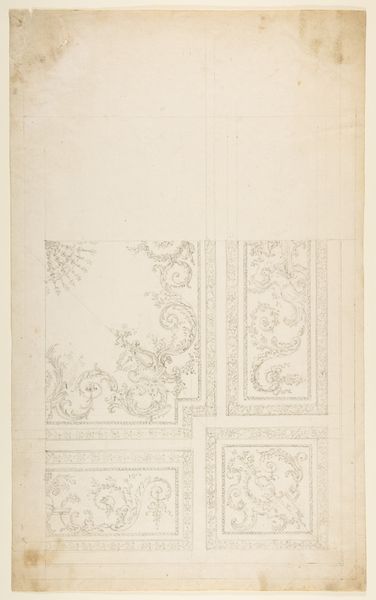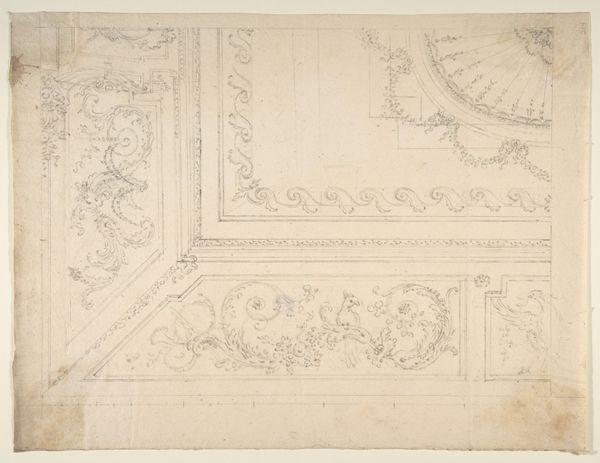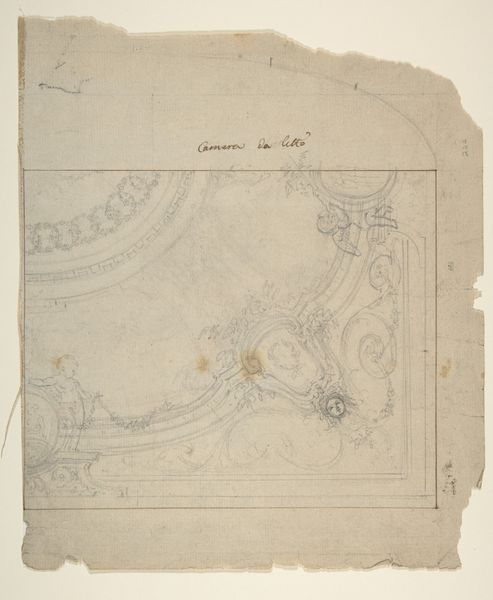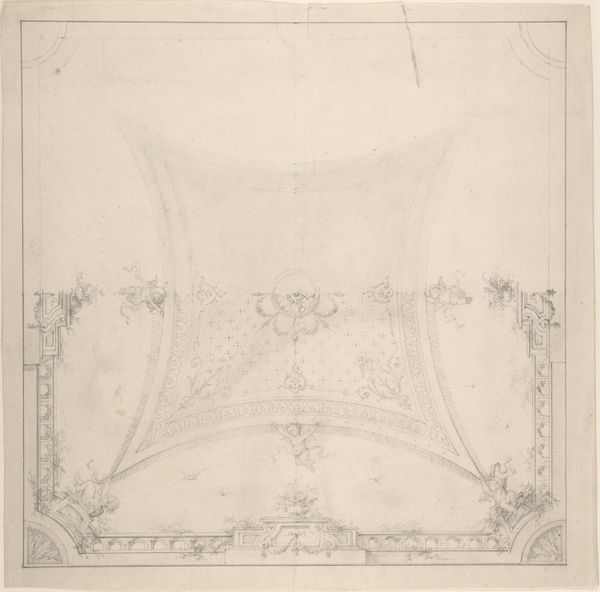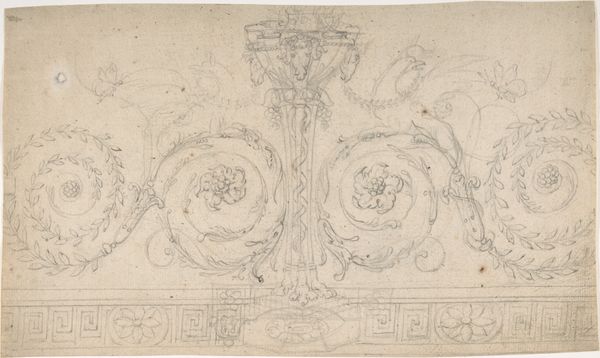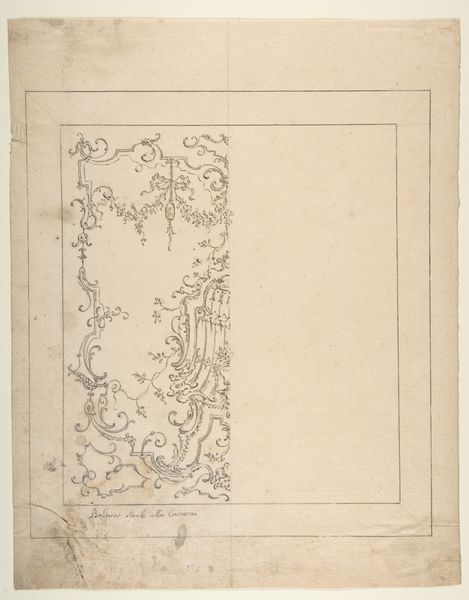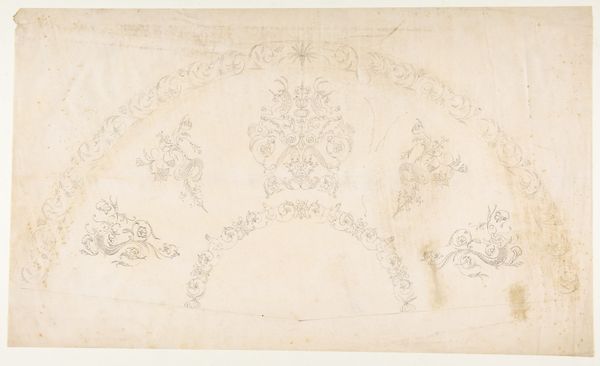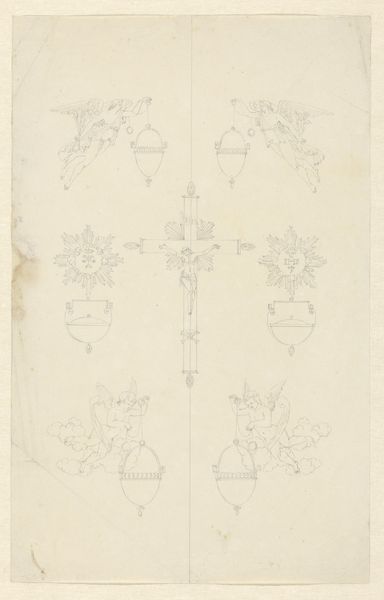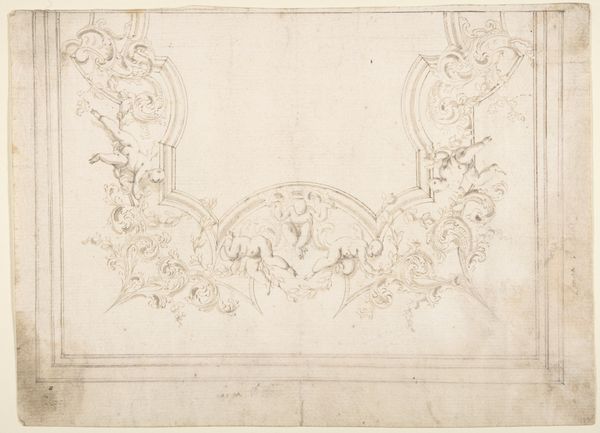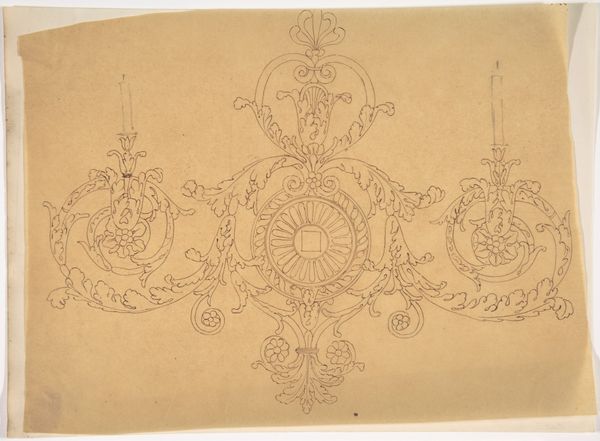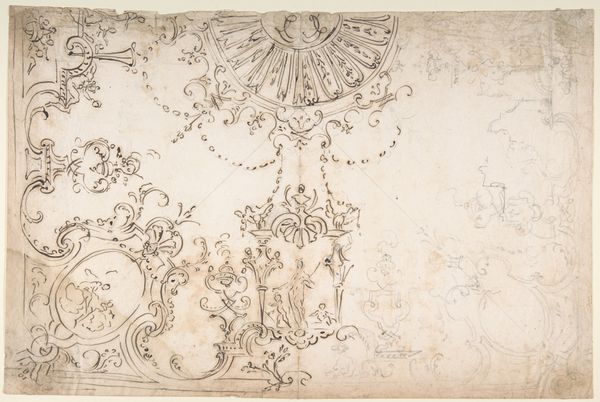
Design for One Half of a Ceiling with Medaillons with Figure Sketches Inside (recto); Design for an Interior Wall Elevation (verso) 1700 - 1800
0:00
0:00
drawing, print, pencil
#
drawing
# print
#
form
#
11_renaissance
#
pencil
Dimensions: 14-1/8 x 16 in. (35.9 x 40.7 cm)
Copyright: Public Domain
Curator: At first glance, it feels like a dance frozen on paper, a waltz of curves and medallions. What secrets do you think this whisper of a drawing holds? Editor: This pencil drawing, “Design for One Half of a Ceiling with Medallions with Figure Sketches Inside," from somewhere in the 1700s, is held in the collection of the Metropolitan Museum of Art. What is particularly striking here, is how the institutional patronage system of the Renaissance, supporting the arts as well as architectural advancements, shaped this interplay between art and design in architectural form. Curator: Precisely! It’s almost architectural daydreaming. The artist, Leonardo Marini, lays bare the bones of adornment, doesn't he? I see those little figure sketches nestled in the medallions like forgotten dreams. Do you get the sense of hidden stories here? Editor: I do. These sketches function as drafts, embodying a fusion of art and architecture intrinsic to the Italian Renaissance, reflecting societal reverence for artistic and intellectual achievement that still dictates museum policies today. This blueprint gives us a unique look into that architectural vision, highlighting art's function in the spatial narratives crafted for public display. Curator: Oh, definitely public display. Can you imagine this extravagance on a grand scale? To think, people walking beneath such ornate beauty...Do you suppose this dance of cherubs and foliage was designed to make people feel insignificant or inspired? Editor: It would've been complicated. A patron probably commissioned such ornate art and architecture to awe those below, yes. But I also imagine these sorts of grand architectural designs, that incorporate visual and intellectual elements so artfully, became sources of public engagement and civic pride. The placement in ceilings would be no accident. Ceilings are historically symbolic—in this case, as a representation of the possibilities of human knowledge and architectural advancements! Curator: That's wonderfully put, the idea of architectural advancement is especially true here! Looking at the artist's delicate pencil strokes I cannot but appreciate how a mere sketch— a humble attempt—can inspire such heights, can contain the seeds of soaring splendor. Editor: I completely agree! This simple piece challenges us to examine our preconceptions regarding not only public and private artistic experiences, but also museums' role in mediating these interactions. I wonder, what feelings and opinions about those architectural advancements and social hierarchies can sketches elicit today?
Comments
No comments
Be the first to comment and join the conversation on the ultimate creative platform.
